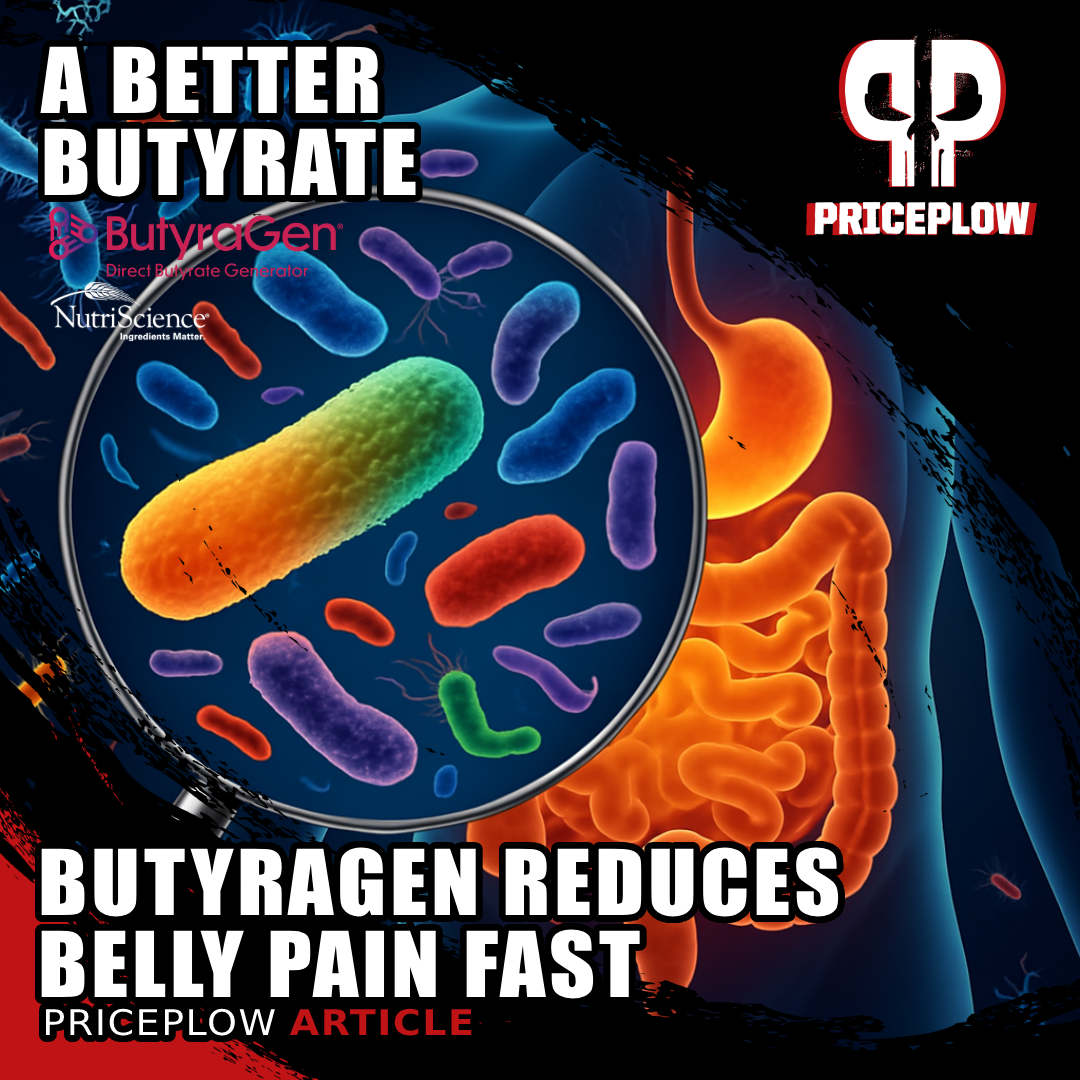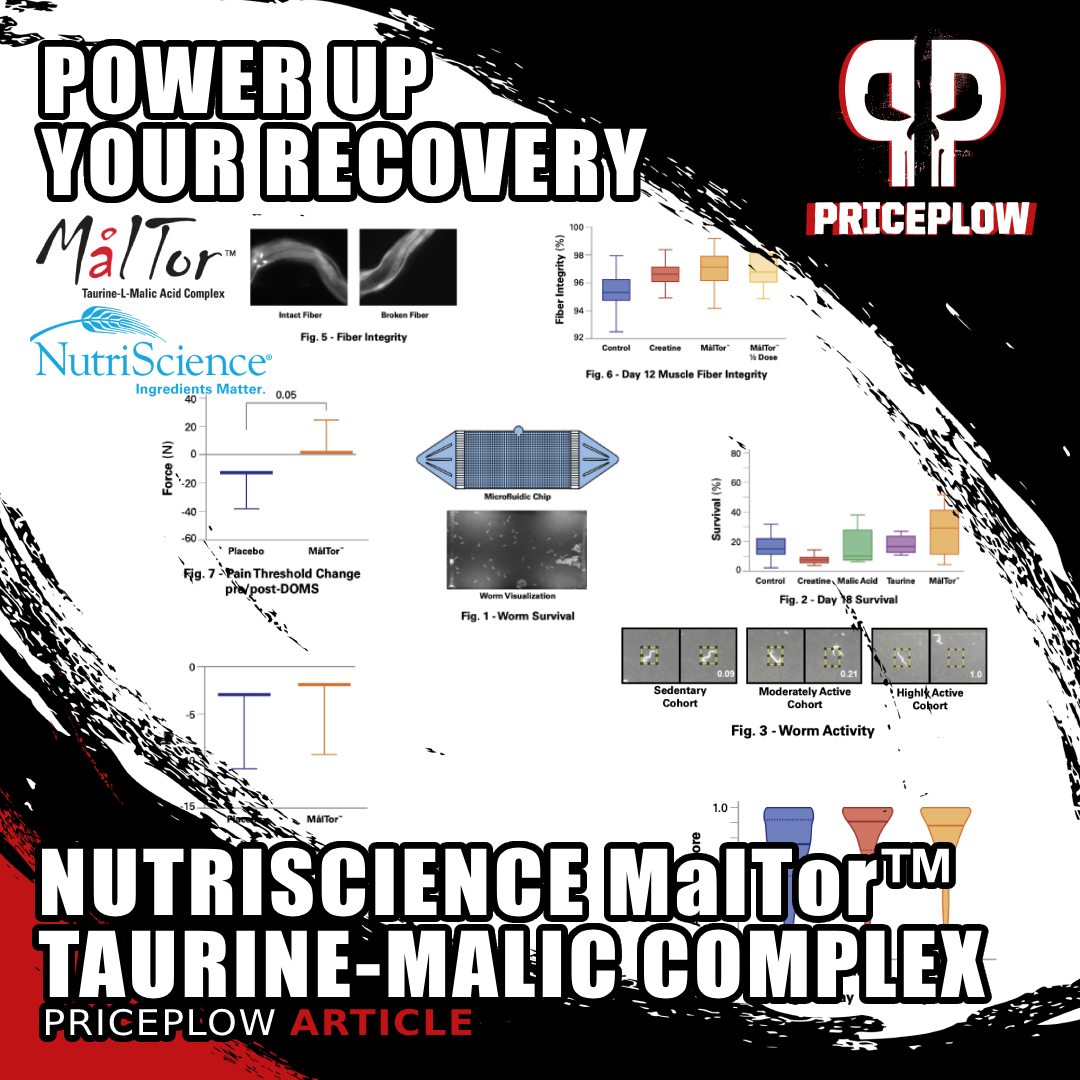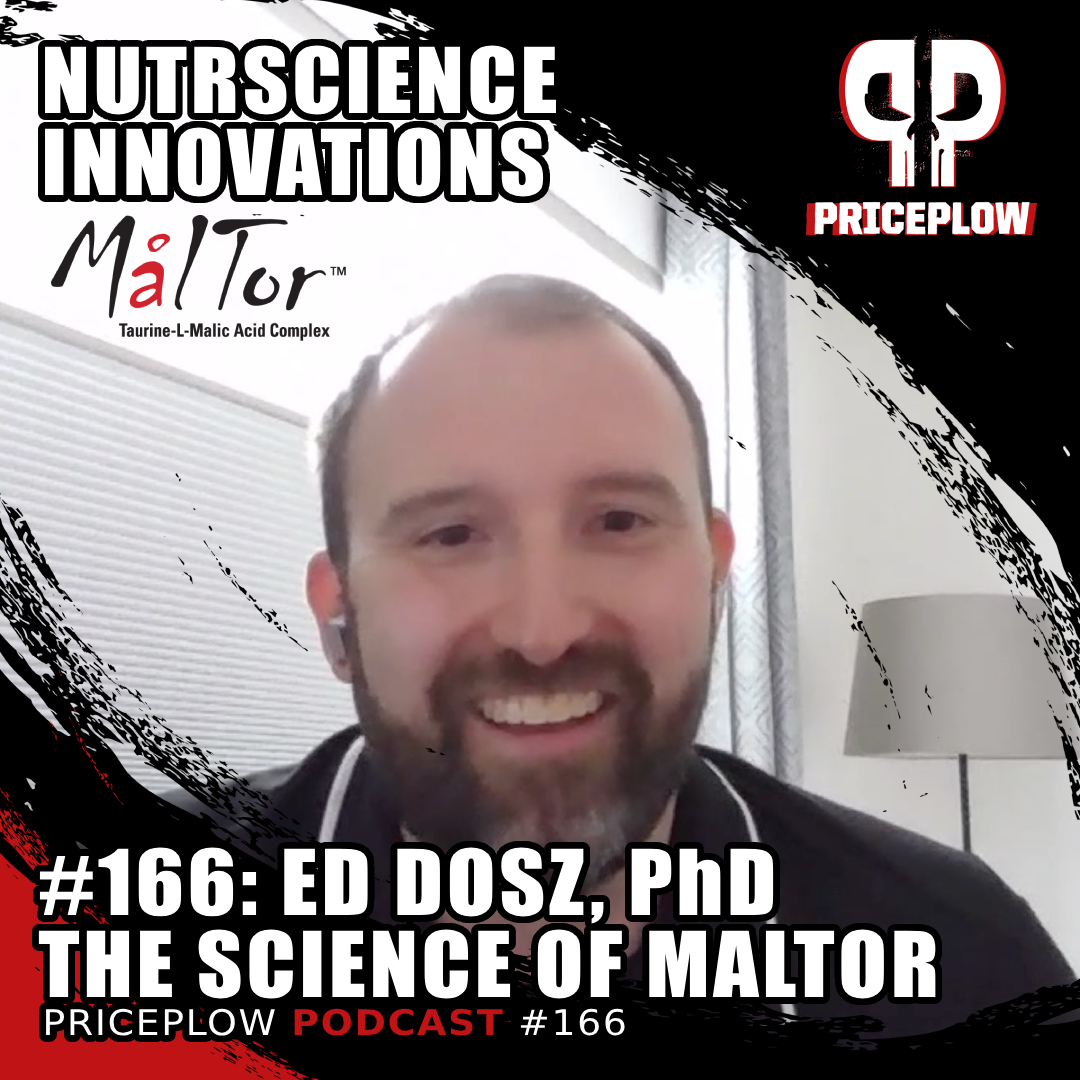In Episode #184 of the PricePlow Podcast, Mike and Ben welcome back Ed Dosz, VP of Science Innovation at NutriScience Innovations, for a comprehensive exploration of ButyraGen, a revolutionary ingredient that generates butyrate directly in the small intestine. With butyrate serving as the primary fuel for colon cells while playing crucial roles in gut barrier function, immune modulation, and the gut-brain axis, Ed explains why this short-chain fatty acid has become one of the most important yet overlooked compounds in modern nutrition.

Ed Dosz, VP of Science Innovation at NutriScience Innovations, returns to the PricePlow Podcast to discuss ButyraGen, a groundbreaking tributyrin-based ingredient that generates butyrate directly in the small intestine, bypassing microbiome limitations to deliver consistent digestive health support in Episode #184.
Ed Dosz Returns to Discuss ButyraGen: Solving the Modern Butyrate Crisis
The conversation tackles a fundamental problem facing modern gut health: the average American consumes only half the fiber needed for adequate butyrate production, and traditional prebiotics work only if you have the right gut bacteria. Ed details how ButyraGen's unique tributyrin-based formulation bypasses these limitations entirely through enzymatic action, delivering consistent butyrate generation regardless of microbiome status, age, or dietary habits.
Beyond the science of butyrate delivery, Ed shares insights from two published clinical studies demonstrating ButyraGen's real-world benefits, including significant reductions in belly pain and improvements in digestive quality of life. The discussion reveals particularly strong benefits for women and postmenopausal individuals, explores the fascinating gut-brain connection, and examines ButyraGen's potential applications in metabolic health, GLP-1 support, and beyond. This episode provides a comprehensive look at why direct butyrate generation represents the next evolution in digestive health supplementation.
Subscribe to the PricePlow Podcast for more conversations with ingredient scientists and industry innovators!
Subscribe to the PricePlow Podcast on Your Favorite Service (RSS)
https://blog.priceplow.com/podcast/nutriscience-butyragen-184
Video: Ed Dosz Explains NutriScience's ButyraGen - Direct Butyrate Generation
Podcast: Play in new window | Download (Duration: 58:16 — 55.7MB)
Detailed Show Notes: The Science and Clinical Benefits of ButyraGen
-
0:00 - Introduction and Reconnecting with Ed Dosz
Mike and Ben welcome listeners and reintroduce Ed Dosz, VP of Science Innovation at NutriScience Innovations, noting this is Ed's second appearance on the podcast. The team previously featured Ed in Episode #166 discussing MalTor, a taurine and malic acid complex for recovery support. Ed brings his extensive background including a PhD in food science from the University of Illinois, years of experience at NOW Foods, and his current role at NutriScience where he's deeply involved in ingredient development and clinical research.
Mike sets the stage by explaining that today's conversation focuses on ButyraGen, a novel ingredient addressing one of modern nutrition's most overlooked challenges: inadequate butyrate production. While most people have heard about probiotics and even prebiotics, few understand that butyrate, a short-chain fatty acid, serves as the primary fuel for colon cells and plays essential roles throughout the body. The team emphasizes how this episode builds upon their comprehensive butyrate guide published on the blog, which explores the science, mechanisms, and importance of this critical compound in unprecedented detail.
-
1:30 - Why Butyrate Matters: The Gut's Primary Fuel
Ed begins by explaining why butyrate has become such a focal point in digestive health research. Butyrate is a short-chain fatty acid that serves as the primary energy source for colonocytes, the cells lining the colon. While most cells in the body prefer glucose for energy, colon cells have evolved to derive approximately 70% of their energy from butyrate oxidation. This isn't just a metabolic preference, it's essential for maintaining gut barrier function and overall digestive health.
The conversation explores how butyrate acts as far more than simple cellular fuel. Ed describes three primary mechanisms through which butyrate supports health: serving as energy for colonocytes, modulating gene expression through epigenetic effects as an HDAC inhibitor, and activating specific cell surface receptors like GPR41, GPR43, and GPR109A. These mechanisms work in concert to support intestinal barrier function, regulate immune responses, and influence the gut-brain axis.
Ben asks about the consequences when butyrate levels drop. Ed explains that without adequate butyrate, colon cells essentially starve, leading to compromised gut barrier function, increased intestinal permeability, and a cascade of digestive discomforts. This sets up the fundamental problem: most people aren't producing enough butyrate from their modern diets, and traditional prebiotics don't solve this problem for everyone.
-
5:00 - The Modern Butyrate Deficit Crisis
ButyraGen generates butyrate directly in your gut through enzymatic breakdown -- no reliance on bacteria populations. Clinical studies show significant belly pain reduction at just 200mg daily, especially effective for women. Much more efficient than traditional prebiotics.
Ed brings up a critical statistic: while health organizations recommend 25-35 grams of fiber daily, the average American consumes only 10-15 grams. Ed emphasizes that this isn't just a minor shortfall, it represents a 50-70% deficit in the primary substrate needed for butyrate production. This fiber gap has multiple causes including ultra-processed foods dominating modern diets, refined grains replacing whole grain options, and consistently low fruit, vegetable, and legume intake across all age groups.
But the problem runs deeper than insufficient fiber alone. Ed explains what he calls the "microbiome lottery": even when fiber intake is adequate, butyrate production isn't guaranteed. Two people eating identical high-fiber diets can have dramatically different butyrate production based on their unique microbiome composition. Not everyone harbors robust populations of key butyrate producers like Faecalibacterium prausnitzii or Roseburia species.
The conversation explores various factors that disrupt butyrate production: antibiotic use decimating beneficial bacteria, age-related decline in microbiome diversity, stress and illness affecting gut ecology, and significant individual variation in bacterial composition. Ed notes the unfortunate irony that people who need butyrate most often generate the least from fiber, creating a vicious cycle where compromised gut health makes it even harder to support gut health through traditional dietary means.
-
9:15 - Why Traditional Prebiotics Fall Short
Ed provides a detailed critique of conventional prebiotic approaches. Traditional prebiotics like inulin, FOS, and resistant starch follow a simple but problematic pathway: fiber reaches the large intestine, gut bacteria ferment it, and hopefully produce short-chain fatty acids including butyrate. The fundamental problem is the word "hopefully", this approach has a dependency issue.
The team discusses common scenarios where traditional prebiotics fail: post-antibiotic recovery when beneficial bacteria populations are decimated, aging when microbiome diversity naturally declines, digestive disorders like SIBO or IBS where harmful bacteria may outcompete beneficial ones, and simple individual variation where some people lack the genetic capacity for robust butyrate production.
Mike asks about tolerance issues with traditional prebiotics. Ed confirms that many people experience gas, bloating, and digestive discomfort when increasing prebiotic intake, especially if their microbiome isn't adapted to high-fiber fermentation. These side effects often limit compliance and effectiveness. Even when people push through the initial discomfort, it can take weeks or months for the microbiome to adapt, and any disruption from antibiotics, illness, or travel can reset this progress.
-
13:30 - Introducing ButyraGen: Direct Butyrate Generation
Butyrate fuels gut cells, supports brain function and metabolism, but modern diets create a deficit. ButyraGen® generates butyrate directly via enzymatic action -- no dependence on gut bacteria. Clinical studies show reduced belly pain, especially in women. Consistent results regardless of microbiome status.
Ed explains how ButyraGen fundamentally changes the approach to butyrate supplementation. Rather than feeding bacteria and hoping they produce butyrate, ButyraGen generates butyrate directly in the small intestine through enzymatic breakdown of tributyrin, completely independent of microbiome status. This represents a paradigm shift from "feed and hope" to "deliver and utilize."
The conversation explores ButyraGen's composition. Each 200mg dose contains 100mg of tributyrin, a short-chain triglyceride consisting of three butyrate molecules attached to a glycerol backbone. NutriScience uses a proprietary process that significantly reduces residual butyric acid levels, eliminating the notorious smell and taste issues that plague other butyrate products. The remaining 50% consists of Sunfiber® and acacia fiber, which aren't just inactive fillers but provide traditional prebiotic benefits for those with healthy microbiomes.
Mike asks about the mechanism of action. Ed details how pancreatic lipase enzymes in the small intestine recognize tributyrin as a substrate for hydrolysis. The enzymes cleave the ester bonds between butyrate and glycerol, releasing three butyrate molecules that become immediately available for absorption. This process occurs within minutes of reaching the small intestine, providing rapid onset of benefits compared to the hours required for bacterial fermentation.
-
18:45 - Dosing Efficiency: Small Dose, Massive Impact
Ben brings up one of ButyraGen's most impressive characteristics: efficiency. Ed confirms that clinical testing has demonstrated just 200mg of ButyraGen generates the same amount of butyrate as 4 grams of inulin or 1 gram of XOS. This represents a 20-fold advantage over inulin and a 5-fold advantage over XOS. You get the same butyrate-generating power from a tiny capsule that you'd get from nearly a teaspoon of inulin powder, but with significantly less gas and bloating.
The team discusses the practical implications of this efficiency. At just 200mg per effective dose, ButyraGen fits easily into capsules, tablets, or powder formulations without dominating the formula. This low dose requirement leaves room for other active ingredients, making it ideal for comprehensive gut health supplements or general wellness formulations where space is at a premium. Formulators can add powerful butyrate support without sacrificing other beneficial ingredients.
Ed emphasizes the formulation advantages beyond just size. The fiber components contribute to extremely low water activity, making ButyraGen incredibly stable and suitable for combination with moisture-sensitive ingredients like probiotics. This opens up possibilities for sophisticated synbiotic formulations that would be impossible with traditional high-dose prebiotics, which typically have higher water activity that can compromise probiotic viability during storage.
-
23:00 - Clinical Evidence: Two Published Human Studies
Mike asks Ed to walk through the clinical validation behind ButyraGen. Ed explains that two published human trials demonstrate both safety and efficacy, providing the kind of rigorous evidence that separates validated ingredients from marketing hype. The first study, published in 2024, established the safety profile and mechanism of action in healthy adults, while the second focused on real-world digestive health outcomes.[1]
The pilot study enrolled 24 participants in a 28-day randomized controlled trial. Participants first completed a 7-day placebo phase, followed by 21 days of either 200mg or 400mg ButyraGen daily.[2] The placebo was ingeniously designed to contain all of ButyraGen's ingredients except tributyrin, allowing researchers to isolate the specific effects of the primary active. Both doses showed excellent tolerability with no significant adverse events, validating the safety of the direct butyrate generation approach.[2]
Beyond safety, the pilot study revealed evidence of butyrate generation and absorption through metabolic markers, anti-inflammatory trends with reductions in hs-CRP, and interesting hormetic effects where the lower 200mg dose showed more pronounced benefits in certain markers including glucose and inflammatory cytokines. This suggested that 200mg represents the optimal dose for chronic supplementation, supporting the manufacturer's recommended dosing.
Ed then describes the more recent digestive health study published in 2025, which enrolled 596 individuals with 213 qualified participants who reliably took the supplement as directed. This randomized, double-blind, placebo-controlled trial specifically recruited individuals seeking to improve their digestive health, making it a perfect test of ButyraGen's practical benefits. The headline finding was statistically significant reductions in belly pain among participants taking 200mg of ButyraGen daily, along with broader improvements in digestive quality of life including relief from reflux symptoms and constipation.
-
28:15 - Women's Health: The Standout Clinical Finding
The conversation takes an important turn as Ed reveals one of the study's most powerful findings: women experienced significantly greater benefits from ButyraGen supplementation, with postmenopausal women showing the most dramatic improvements.[2] With 68% of participants being women, researchers had sufficient statistical power to analyze gender-specific responses, revealing a 20% reduction in belly pain among women compared to the overall population average.
MalTor™ combines taurine and L-malic acid to boost recovery, reduce muscle soreness, and enhance mitochondrial function. Research shows this 2:1 complex significantly improves pain threshold after intense workouts!
Ed explains the biological basis for these enhanced benefits. Estrogen plays a crucial role in maintaining gut barrier function and supporting beneficial bacteria populations. As estrogen levels decline during menopause, women often experience increased intestinal permeability, altered gut motility, and shifts in microbiome composition. These hormonal changes create what Ed calls a "perfect storm": increased need for butyrate due to hormonal changes, but decreased ability to produce it naturally.
Mike asks about the estrobolome, a term that's gaining recognition in women's health circles. Ed confirms that the estrobolome, a collection of gut microbiota involved in estrogen metabolism, plays a crucial role in regulating circulating estrogen levels. When the gut is compromised, estrogen metabolism can be disrupted, potentially affecting overall hormonal balance. By supporting gut health through direct butyrate generation, ButyraGen may help normalize estrogen metabolism, which could explain some of the enhanced benefits seen in postmenopausal women.
-
33:30 - The Gut-Brain Axis and Future Research Directions
Ben steers the conversation toward one of Ed's favorite topics: the gut-brain axis. Ed lights up as he explains how butyrate influences brain function through multiple pathways, including direct neural signaling via the vagus nerve, systemic circulation crossing the blood-brain barrier, and immune modulation that affects neuroinflammation.
The team discusses emerging research showing butyrate's effects on mood, cognitive function, and even sleep quality. Ed explains that butyrate stimulates enteroendocrine cells to release hormones like GLP-1 and PYY, which signal to the brain via the vagus nerve. These signals influence not just appetite but also mood and mental clarity. Some butyrate enters systemic circulation and crosses the blood-brain barrier, where it acts as an HDAC inhibitor, influencing gene expression in neurons and glial cells.
Mike asks about future research directions for ButyraGen. Ed reveals that NutriScience is particularly interested in exploring applications beyond digestive health, including metabolic health, healthy aging, and the gut-brain connection. The company is planning studies on ButyraGen's effects on insulin sensitivity, GLP-1 production, and cognitive function in aging populations. Ed emphasizes that the beauty of ButyraGen is its versatility, the same mechanism that supports digestive health also influences metabolism, immunity, and brain function.
-
38:45 - Metabolic Health and GLP-1 Connections
The conversation shifts to metabolic applications as Mike brings up the connection between butyrate and GLP-1 production. Ed explains that butyrate activates GPR41 and GPR43 receptors in enteroendocrine cells, stimulating GLP-1 and PYY secretion. These hormones help regulate appetite and glucose metabolism, making ButyraGen potentially valuable for metabolic health applications beyond just digestive support.
Ed discusses research showing butyrate's effects on insulin sensitivity through activation of AMPK, often called the body's "metabolic master switch." AMPK activation improves glucose uptake in muscle cells, reduces glucose production in the liver, and enhances overall metabolic flexibility. The team explores how this makes ButyraGen interesting for formulations targeting healthy weight management or metabolic wellness, especially when combined with probiotics or other metabolic support ingredients.
Ben asks about combining ButyraGen with existing GLP-1 support supplements. Ed confirms this is an area of active interest, noting that NutriScience has seen products like The Vitamin Shoppe's GLP-1 Support Synbiotic successfully combine ButyraGen with probiotics specifically chosen to support GLP-1 pathways. The synergistic approach provides both immediate butyrate generation and long-term microbiome support for sustained metabolic benefits.
-
43:15 - Practical Applications and Product Formulations
Mike asks Ed about current products containing ButyraGen and best practices for formulation. Ed mentions several standout supplements, details you can find in our main ButyraGen article (starting with Wellness Resources Tributyrin Plus, which provides ButyraGen in its purest form at 400mg per capsule). This standalone approach is ideal for evaluating ButyraGen's effects without other variables.
There are also more complex formulations like BioTrust Ageless Biome, which combines ButyraGen with MicrobiomeX®, a citrus flavonoid complex. This dual-action formula provides both direct butyrate generation and microbiome modulation, creating multiple pathways for supporting gut health. The combination makes particular sense for healthy aging applications where both immediate butyrate delivery and long-term microbiome support are valuable.
Ed Dosz of NutriScience Innovations dives deep into MalTor, a groundbreaking taurine-malic acid complex for enhanced recovery, mitochondrial support, and healthy aging on Episode #166 of the PricePlow Podcast.
Ed discusses formulation considerations, emphasizing ButyraGen's versatility. The low water activity makes it suitable for direct combination with probiotics, the minimal odor profile allows use in various delivery formats, and the small dose requirement enables comprehensive multi-ingredient formulas. He notes that synbiotic combinations show particular promise, with internal data demonstrating that ButyraGen combined with specific probiotic strains like Lacticaseibacillus rhamnosus GG produces significantly more butyrate than either ingredient alone.
-
48:30 - Quality Matters: Not All Tributyrin Is Created Equal
Ben raises an important question about generic tributyrin supplements versus ButyraGen. Ed provides a detailed explanation of why quality matters tremendously in this category. Standard tributyrin products typically contain higher levels of residual butyric acid, which creates that notorious rancid butter smell and taste that makes supplements nearly intolerable for consumers. This isn't just an aesthetic concern, it's a compliance issue that directly impacts effectiveness.
Ed explains NutriScience's proprietary processing that reduces residual butyric acid levels to negligible amounts. This processing makes a massive difference in consumer acceptance and compliance, and a supplement only works if people actually take it consistently. The investment in superior processing pays dividends in real-world use, where consumers can take ButyraGen daily without the sensory assault that causes them to abandon other butyrate supplements after just a few days.
The team discusses how the "butyrate burp" phenomenon common with sodium butyrate is completely eliminated with ButyraGen. Because the tributyrin remains stable through stomach acid and doesn't break down until reaching pancreatic lipase in the small intestine, users don't experience unpleasant aftertastes or burping. The fiber components further help mask any residual aroma while providing additional prebiotic benefits, creating a complete solution rather than just isolated tributyrin. This superior tolerability translates directly to better compliance and sustained benefits over weeks and months of use.
-
53:00 - Stacking Strategies and Combination Recommendations
Mike asks Ed about optimal ways to use ButyraGen, whether standalone or in combination with other ingredients. Ed emphasizes that ButyraGen works excellently as a standalone supplement at 200mg daily, providing consistent butyrate generation regardless of diet, microbiome status, or other variables. However, strategic combinations can amplify benefits through complementary mechanisms.
The conversation explores synbiotic approaches, combining ButyraGen with probiotics to create both immediate butyrate delivery and enhanced bacterial SCFA production. Ed notes that specific strains show particularly strong synergy, with unpublished ex vivo data demonstrating dramatic increases in butyrate production when ButyraGen is combined with LGG compared to either ingredient alone.
Ed discusses combining ButyraGen with traditional prebiotics for those seeking comprehensive gut health support. While ButyraGen provides immediate, microbiome-independent butyrate generation, additional fiber sources can support broader microbiome health and provide substrate for other beneficial bacteria. The team also explores an often-overlooked application: combining ButyraGen with minerals like magnesium and potassium, which support bowel movements and digestive comfort through different mechanisms.
-
57:45 - Safety, Tolerability, and Long-Term Use
Ben asks about ButyraGen's safety profile and suitability for long-term supplementation. Ed provides comprehensive details about the ingredient's excellent safety record, starting with its self-affirmed GRAS status. Both ButyraGen itself and its individual components have achieved Generally Recognized as Safe status, providing regulatory confidence in the ingredient's safety.
The clinical studies demonstrate remarkable tolerability. Less than 10% of participants in the pilot study reported any gastrointestinal-related discomfort, and those reports were minimal and transient. Even at double the recommended dose, tolerability remained excellent with no significant adverse events. Ed emphasizes that this superior tolerability compared to traditional prebiotics stems from the direct generation mechanism that bypasses the fermentation process typically causing gas and bloating.
Ed addresses long-term use considerations, noting that butyrate is a natural compound continuously produced by healthy gut bacteria. Supplementing with ButyraGen essentially provides what the body would ideally produce on its own if given adequate fiber and optimal microbiome composition. There are no known tolerance issues or diminishing returns with continued use, unlike some supplements where benefits plateau over time.
-
1:02:15 - Ed's Vision for the Future of Gut Health
Is there a Vitamin A Toxicity EPIDEMIC? Dr. Garrett Smith joins the PricePlow Podcast for Episode #150 and dives into the dangers and symptoms of Vitamin A toxicity -- and how to detox it for better overall health. We also get into the dangers of calcification and joint pain from vitamin D3 supplements, making for a very informative and potentially controversial episode.
As the conversation winds down, Mike asks Ed about his broader vision for gut health supplementation and where he sees the field heading. Ed reflects on the evolution he's witnessed during his career, from simple fiber supplements to sophisticated probiotic formulations to now, direct butyrate generators like ButyraGen that work regardless of individual microbiome status.
Ed expresses excitement about personalized nutrition becoming more accessible while simultaneously developing solutions like ButyraGen that work universally. He envisions a future where consumers have options: personalized approaches based on microbiome testing for those who want that level of customization, and reliable solutions like ButyraGen for those seeking effective support without the complexity of personalization.
Bile acid production is also discussed as a future frontier -- this was covered extensively with Dr. Garrett Smith in Episode #150.
The team discusses the importance of clinical validation, with Ed emphasizing that NutriScience's commitment to publishing peer-reviewed research sets a standard the industry should aspire to. Too many ingredients make claims without robust clinical backing, but ButyraGen's two published human studies provide confidence that the benefits are real and reproducible.
-
1:06:30 - Closing Thoughts and Contact Information
Mike and Ben thank Ed for his time and for returning to share the ButyraGen story in such comprehensive detail. Ed expresses enthusiasm for the growing recognition of butyrate's importance and appreciation for platforms like the PricePlow Podcast that help educate both industry professionals and consumers about ingredient science. He notes that while butyrate has been studied for decades, the challenge of effective delivery has limited its practical application until now.
Ed mentions that NutriScience maintains an active presence on LinkedIn where listeners can follow developments and reach out with questions. The company welcomes scientific conversations and is particularly interested in connecting with formulators, brands, and researchers exploring applications for ButyraGen. Mike encourages listeners to check out the comprehensive articles on butyrate and ButyraGen published on the PricePlow Blog (linked below), emphasizing that the written guides complement this podcast perfectly by providing even deeper dives into the mechanisms, research, and applications of butyrate supplementation.
Where to Follow Ed Dosz and Learn More About ButyraGen
- NutriScience Innovations: NutriScienceUSA.com
- NutriScience on LinkedIn: LinkedIn.com/company/nutriscience-innovations-llc/
- Ed Dosz on LinkedIn: LinkedIn.com/in/edward-dosz/
- ButyraGen Breakdown Article: blog.priceplow.com/supplement-ingredients/butyragen
- Complete Butyrate Guide: blog.priceplow.com/supplement-research/butyrate
Thank you to Ed for returning to share the science behind ButyraGen and demonstrating how direct butyrate generation represents the next evolution in digestive health supplementation. The combination of clinical validation, superior tolerability, and microbiome-independent efficacy makes ButyraGen a genuinely innovative solution for the modern butyrate deficit crisis.
Subscribe to the PricePlow Podcast for more conversations with ingredient scientists and innovators pushing the boundaries of supplement science!













Comments and Discussion (Powered by the PricePlow Forum)